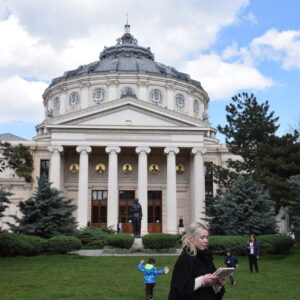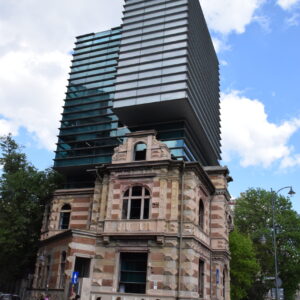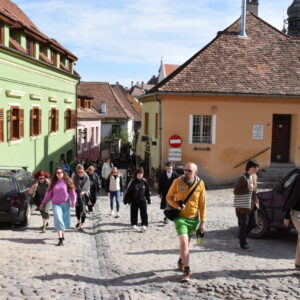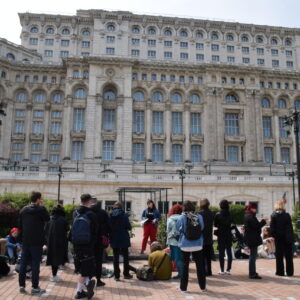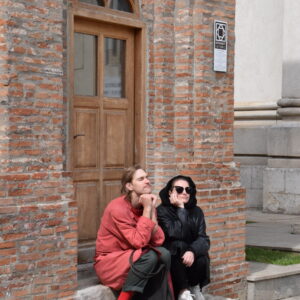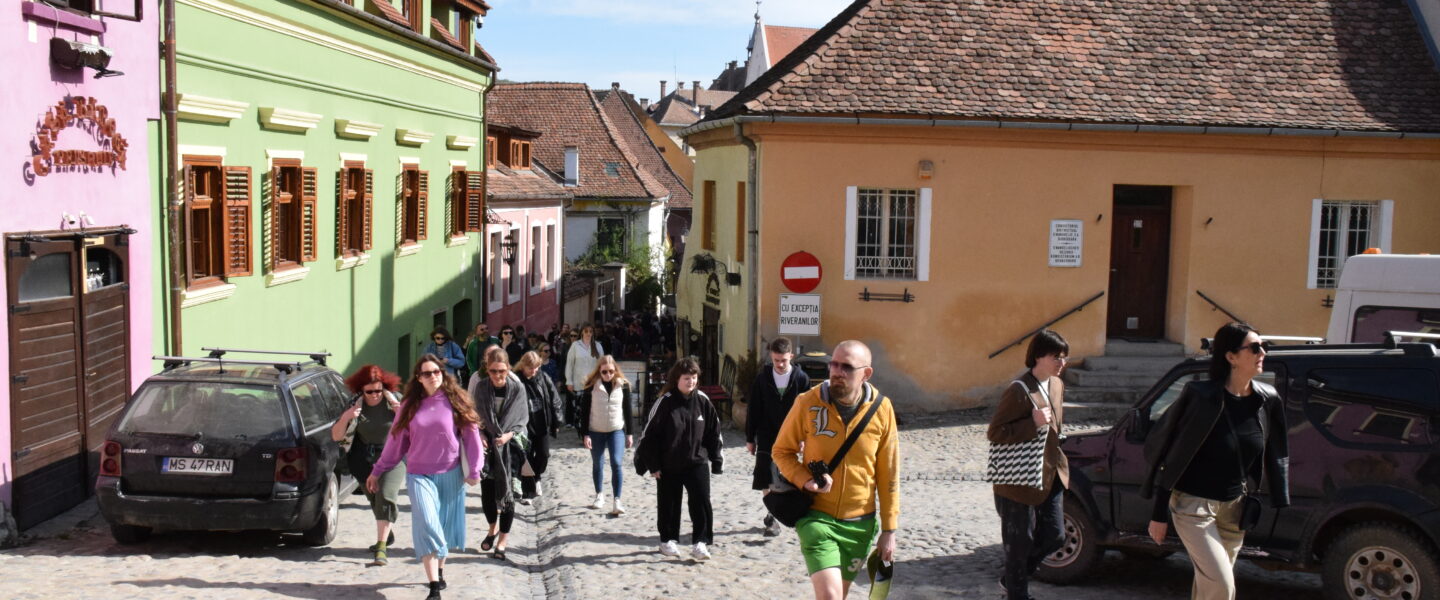
A joint History of Foreign Art study trip for art and heritage students visited Romania in April 2024. The aim of the trip was to learn about the region’s rich architectural and cultural heritage and the complexities of its history, and to learn how to analyse architectural and artistic works on site. An important part of the preparation of the trip was the preparation of the texts for the guidebook, which had to be presented on the spot.
The trip, which lasted more than a week, focused mainly on the historical sites of Transylvania, Bukovina and Wallachia. An important background was provided by the history of Romania, with no escape from the politics and life of Vlad the Impaler and Nicolae Ceaușescu. In the history of art, fascinating themes directly linked to Romanian artists, though largely known through France, were Dadaism and the sculptor Constantin Brâncuși and his work.
The trip started in the Romanian university town of Cluj-Napoca, where the city’s development and notable buildings, especially from the mid-19th to mid-20th century, such as the casino building in the central park, as well as the early town fortifications, were explored. The city of Cluj is home to a number of churches of different denominations, such as the Roman Catholic Church of St Michael, the Franciscan Church and Convent, the Bishop’s Church, the Orthodox Cathedral of the Assumption of the Virgin Mary from the 1920s and 1930s, and a particularly well-preserved 17th-century Calvinist-Reformed church with its interior decoration, which reflects the artistic aspirations of the different denominations. Other sites visited included the Cluj Art Museum and the Museum of the History of Transylvania.
In the heart of Transylvania, the historic, romantically picturesque towns of Sighișoara and Brașov offered a fascinating visit. Sighișoara is given a medieval look by its numerous defence towers, including an imposing bell tower. A unique feature is the wooden staircase with a roof, the so-called “Scholars’ Stairs”, which dates back to the 17th century and leads to the Biserica din Deal, the old German cemetery and the school. In the heart of Brașov is the Black Church e Biserica Neagră, a powerful 15th-century three-bay Gothic house church. Brașov’s 19th-20th century architecture offered interesting examples and discussions of both historicist and modernist architecture, including the so-called neo-Romanesque or more specifically neo-Brâncovean style, represented for example by the library named after George Barițiu (1930).
A special attractions in the itinerary were the painted monastery churches of Bukovina, which remained a prominent feature in the travel memories of both students and lecturers. Of the monasteries on the other side of the Carpathians, Voroneți, Moldovița, Sucevița and Dragomirna were visited. These UNESCO World Heritage Sites are covered with paintings both inside and on the exterior façade, which prompted discussions on the depiction of religious scenes as well as on the conservation problems of outdoor paintings.
In the capital Bucharest, various art and history museums were visited, monuments were discussed, and inter-war architecture, such as the work of architects Horia Creangă and Duiliu Marcu, was explored. We also discussed contemporary art galleries and examples of 21st century architecture, such as the Union of Architects’ House and the bookstore Cărturești Carusel, which, by their location and architectural design, must be directly related to older architecture.
At the turn of the 19th and 20th centuries, formal historicist and art nouveau buildings such as the Ateneul Român allowed us to reflect on why Bucharest was called Little Paris. Much was said about Bucharest during the Ceaușescu era, including the dictator’s massive reorganisation, which led to the removal of historic churches. Among others, the Church of St Michael the Baptist, the Stavropoleos Monastery and Church, and the Romanian Patriarch’s Cathedral were explored. The tour concluded with a visit to Bucharest’s most famous building, the Romanian Parliament Palace, which is also the world’s heaviest.
The traineeship was supervised by faculty members Liisa-Helena Lumberg-Paramonova, Oliver Orro, Krista Kodres, Tiina Abel, Anneli Randla, Kristina Jõekalda, Ingrid Ruudi, Hilkka Hiiop, Riin Alatalu, Merike Kallas, Andrus Laansalu, Taavi Tiidor, and doctoral students-junior researchers Triin Reidla, Kateriin Ambrozevits, Varje Õunapuu, Anu Soojärv and Aljona Gineiko.
The study trip was supported by the Cultural Endowment of Estonia and Erasmus+.
Overview was compiled and pictures taken by Liisa-Helena Lumberg-Paramonova

